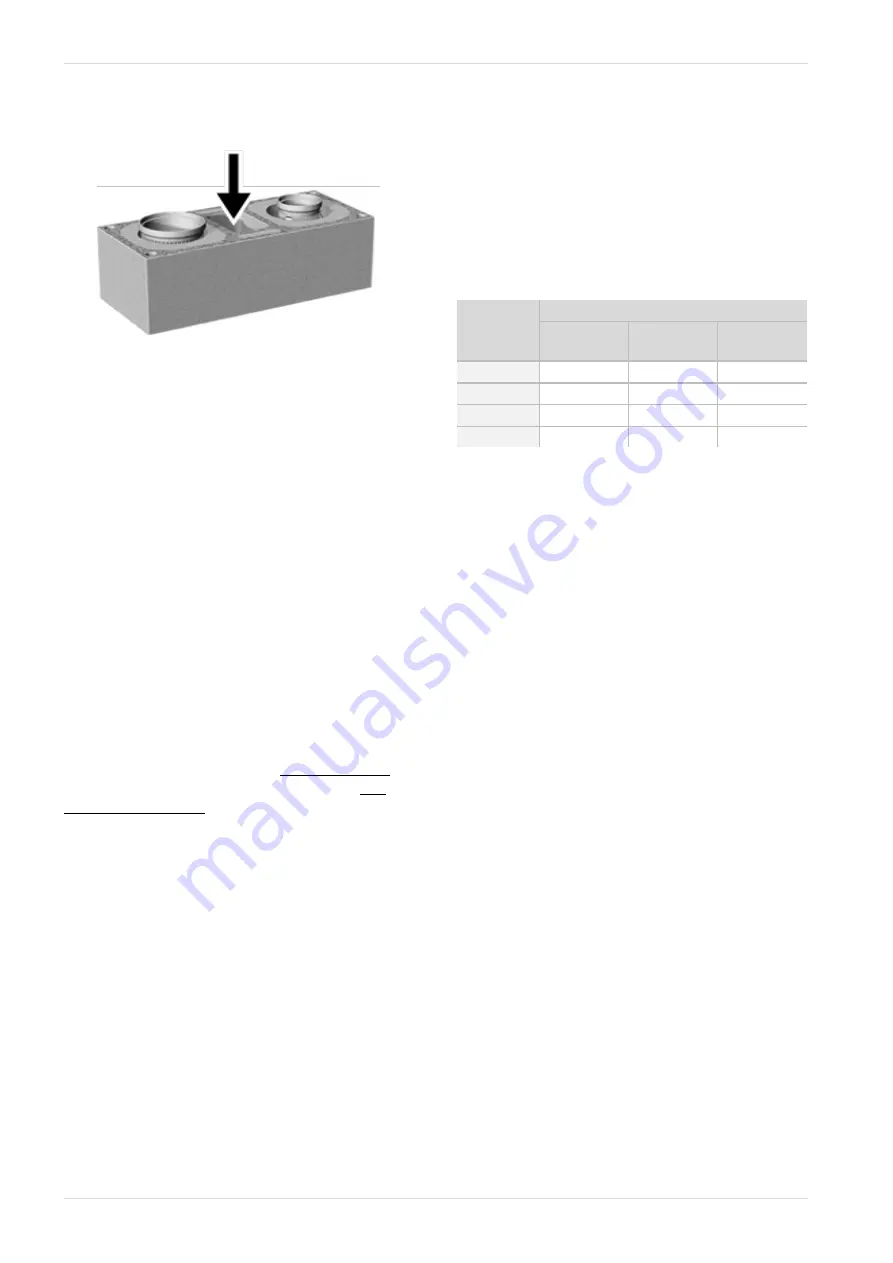
2 Safety information
RAI line integrated in chimney
The recommended variant: The intake air is taken in
from outside of the chimney pipe down to the boiler.
RSA line outside of the chimney
–
Fire-rated insulation with rockwool required if the
RAI line passes through other rooms.
–
Cold insulation of the RAI line within building ele-
ments (wall, floor, ...) required to avoid damage to
the building from condensate.
–
Further information: standard EN 15287-2
►
Establish the RSA connection
3.7 Filling water of the heating system
Two essential points must be observed with regard to
the quality of the filling water (according to guideline
VDI 2035):
–
Avoidance of stone formation (limescale)
–
Avoidance of corrosion on the water side (caused
by oxygen in the heating water)
The lowest possible rate of corrosion of the installed
metallic materials can be achieved primarily if the
circulating water is located in the correct pH range
(8.2 to 9.5) , and if at the same time there is a low
electrical conductivity (50 to 100 µS/cm).
3.7.1 Avoid the formation of scaling
What is scaling
Scaling is the formation of firmly adhering deposits on
water-contacting walls of hot water heating systems.
This can subsequently lead to damage (stress cracks
in the metal, leakage).
Cause of scaling
The cause of scaling is the presence of limestone in
the water.
The following calculation/table determines the per-
missible total hardness of the filling water. If the
values are exceeded, the filling water must be trea-
ted, e.g. softened.
Calculation of the permissible total hardness of
the filling water
To determine the total allowable hardness for the sys-
tem, the
specific water content
must be determined:
System volume
divided by
total heating capacity
equals
Specific system volume
1166 litres / 25 kW =
46.64 l/kW Specific system
volume
Table: Permissible total hardness of the filling water
Total heat
output
Specific system volume (VDI 2035)
<20
l/kW
≥ 20 <50
l/kW
≥ 50
l/kW
< 50 kW
≤ 16.8°dH
≤ 11.2°dH
< 0.11°dH
50 - 200 kW
≤ 11.2°dH
≤ 8.4°dH
< 0.11°dH
20 - 600 kW
≤ 8.4°dH
< 0.11°dH
< 0.11°dH
> 600 kW
< 0.11°dH
< 0.11°dH
< 0.11°dH
For example: if the total hardness of the filling water is
more than 11.2°dH, the filling water must be treated.
3.7.2 Avoid the corrosion on the water side
Corrosion is usually triggered by the available oxygen
in the water. This value can be brought into a safe
range with proper planning, design, installation and
maintenance of the heating system. A constant input
of oxygen should be avoided
Important in this regard:
–
Expansion vessel
: Air suction during cooling
of the heating system must be prevented. Pay
attention to:
–
Correct planning and execution of the expan-
sion vessel.
–
Regularly check the system pressure, pre-
pressure of the expansion vessel.
–
Immediately repair leaks in the heating system.
–
In the case of underfloor heating systems of older
construction years, ensure diffusion-tight pipes
Check the pH of the filling water
–
The pH value must be between 8.2 and 9.5.
–
If this pH value does not adjust itself after one
week in operation, it must be raised by adding 10
g/m³ trisodium phosphate (Na3PO4) or 5 g/m³
sodium hydroxide (NaOH). Allow 2 to 4 weeks of
operation before further corrections.
–
Exception: If aluminium materials are used in the
heating system, a pH from 8.2 to 8.5 must be met
(pH> 8.5 increased corrosion tendency).
8
Installation manual
ecotop-zero, ecotop-light









































